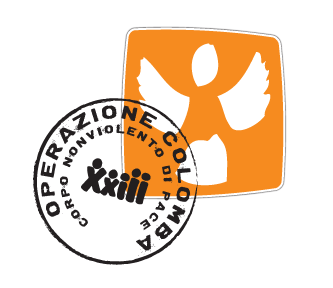The state of Colombia: background
Amnesty International Report deeply details the state of Colombia (pages 130-134). Nothing new under the sun actually, except for those who kept hope alive after the peace agreement.
According to the report, indeed, “the civilian population, especially Indigenous Peoples, Afro-descendant and peasant farmer communities, and human rights defenders, continued to be the main victims of the ongoing armed conflict”. Despite a decrease in the number of civilians killed in clashes between the FARC and the Colombian security forces from the start of the negotiations to signing of the Peace Agreement in 2016, the armed conflict has not ended and in some parts of the country it seemed to have intensified.
Peace Community of San Josè de Apartadò
Regarding the Peace Community of San Josè de Apartedò Amnesty International Human Rights Report says: “There were reports of paramilitary attacks and threats against leaders of the Peace Community of San José de Apartadó in the department of Antioquia*. On 29 December, armed men attempted to kill Germán Graciano Posso, the legal representative of the community. Other community members disarmed them, but were injured in the process. The Peace Community had sought to distance itself from the armed conflict by formally refusing to allow state security forces, guerrilla groups or paramilitary groups to enter their territory. Despite their efforts to remain neutral, people living in San José de Apartadó continued to be victims of attacks, torture, sexual abuse and forced displacement at the hands of all parties to the conflict”.
Human Rights defenders
But the situation is not bright also in other regions. Human rights defenders continued to be the victims of threats and targeted killings. According to the Office of the UN High Commissioner for Human Rights, at least 105 human rights defenders were killed in Colombia during the year. “There continued to be an alarming rate of attacks against defenders of the rights of Indigenous and Afro-descendant people, peasant farmers and women, calling into question the implementation of the Peace Agreement”. The association Somos Defensores declared that the number of killings of defenders increased by 31% in the first half of the year compared to the previous year.
Finally the report states that “Many death threats against human rights defenders and other activists were attributed to paramilitary groups, but in most cases of killings it was difficult to identify which groups were responsible. However, the nature of the work carried out by the victims, many of whom were community leaders or land and environmental rights activists, suggested that several of them may have been killed because of their human rights work. Moreover, it appeared that denouncing abuses was perceived as a threat by regional and local economic and political interests, as well as by various armed groups, including paramilitaries”.
* Colombia: Further information: Paramilitary build-up in Peace Community
Colombia: Spike in attacks against peace community shows conflict still alive


 OPERAZIONE COLOMBA
OPERAZIONE COLOMBA
